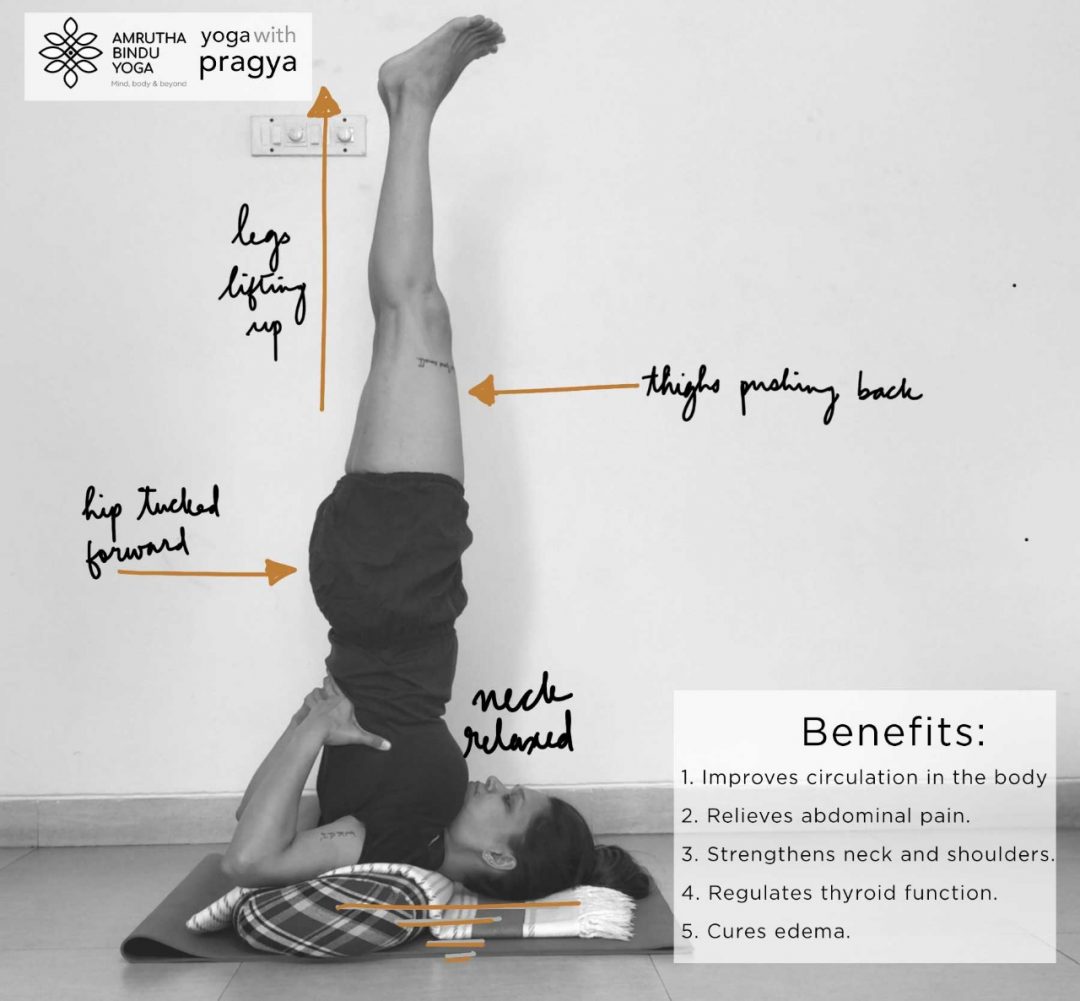Sarvanga (Sarva=all, whole, entire, complete; anga=limb or body) means the entire body or all the limbs. In this pose the whole body benefits from the exercise, hence the name. (Light on Yoga, p 206)
What is Sarvangasana?
Sarvangasana is a yoga pose that is categorised as an inversion because in this pose the body is upside down and supported by the shoulders. It is an integral pose in all styles and lineages of yoga. In the Iyengar style of yoga we emphasise the importance of correct alignment and balance in the pose, often using props such as bolsters, blankets and belts to achieve the correct alignment.
In many old yoga books you will find this posture also called the Candlestick posture because the body is supposed to resemble a straight candle on a candle holder.
Why is it Called the Mother of Asanas?
The Sarvangasana is beneficial for your entire body, which is why it’s called the Mother of all Asanas. Just like the mother nourishes you, so the Sarvangasana nourishes you in many different ways. In fact, there is also the chinlock, the Jalandhar Bandha that forms.
Benefits of Sarvangasana
- Expand the chest enabling deeper breathing.
- Eradicate common cold and other nasal disturbances.
- Stimulate the thyroid and parathyroid glands.
- Get rid of even chronic headaches.
- Relieve insomnia and hypertension.
- Detoxify the system.
Contraindications for Sarvangasana
Don’t do the Sarvangasana if:
- You’re mensturating.
- Have diarrhea.
- Have a headache or a migraine.
- Have a shoulder injury.
Busting the Myths
Over the years I’ve seen students avoiding Sarvangasana practice because they fear going upside down or feel the posture is too challenging for them. I always encourage students to work with an experienced teacher to overcome their fear. Yoga is after all, as much about physical strength as about your mental strength.
I’ve also seen non-Iyengar practitioners unmindful of the alignment of the posture. This can lead to injury. It’s best to find out how to use props such as the chair to practice so that you can reap all
How to Do Sarvangasana: Practice Pointers
- In the final position only the back of the head, the neck, shoulders and upper arms should be on the floor. You must take care NOT to bring the chin in to the chest, but to bring the chest forward to the chin. When you do this the entire spine stretches.
- If you find that your body isn’t perpendicular work on tightening the buttocks and lifting up vertically.
- Don’t allow the elbows to widen outwards. This will make it more difficult to straighten the trunk.
- Also ensure that your neck doesn’t move sideways, as that will cause injury to the neck.
Learn More: Online Class & Advanced Variations
Watch this recording of my online class titled Sarvangasana: Find Your Line where you can learn how to practice Sarvangasana with the correct alignment. If you’ve been practicing for a few years and want to increase the intensity of your practice read this blog on the Sarvangasana Cycle.
Stay tuned for more from our Yoga to Boost Immunity Sequence.
Follow Amrutha Bindu Yoga here.
Follow Medha Bhaskar here.
Follow me on Instagram here.
To join my classes or other enquiries please reach out to me on pragya.bhatt@gmail.com.

1 Comment
[…] the etymological structure and why it’s called the ‘Mother of All Asanas’ in this blog. It’s an important posture in the Iyengar style of yoga, practiced every day except during […]